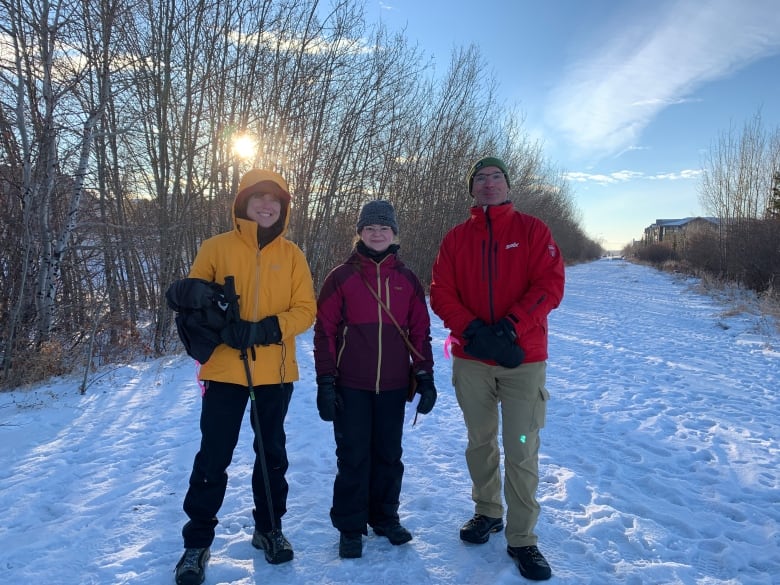
An Edmonton research project is enlisting new recruits to harass urban coyotes in the streets.
A strong pitching arm is considered an asset.
Volunteers will be encouraged to chase down coyotes, charging and stomping, while lobbing sand-filled tennis balls at the animals.
The repetitive hazing, called aversive conditioning, is intended to make the coyotes more fearful of humans, discouraging them from hunting and rearing their pups in residential areas.
The citizen patrols first hit the streets last winter. Preliminary results suggest the scare tactics are working.
The project is the work of the Edmonton Urban Coyote Project, an ongoing study dedicated to researching the city’s population of resident coyotes.
Quite the ruckus is required to give coyotes a good scare, said Colleen Cassady St. Clair, a University of Alberta biologist overseeing the project.
She likens it to a neighbourhood watch. If volunteers can get within 40 metres of a coyote, the hazing begins.
“Volunteers can shout or shake a can full of coins or use a little hand-held air horn and try to throw a tennis ball,” said St. Clair, who often uses the pop of an umbrella on her patrols.
“We think this combination is quite intimidating for coyotes.”
Cruel to be kind
While coyotes rarely attack, the animals can become too bold, leading to unwanted interaction with people and pets.
Many government and conservation agencies, including the City of Edmonton, recommend aversive conditioning as a humane way to manage urban populations of the wild canines.
Similar tactics have been employed for decades to keep wildlife at bay. Rocks, slingshots and rubber slugs have been used in national parks across North America to deter hungry bears from eating garbage.
Our hopes of getting coyotes out of cities are slim and none.-Colleen Cassady St. Clair
“Hard hazing” could become a powerful and affordable method to manage the estimated 500 to 1,000 coyotes that roam Edmonton, St.Clair said.
“Our hopes of getting coyotes out of cities are slim and none,” she said.
“Our best hope for the future is to coexist with them more successfully, and I think we could do that if we make coyotes more wary around people.”

Last winter, 41 Edmonton neighbourhoods were invited to participate in the project, based on high rates of coyote sightings.
A total of 28 neighbourhoods signed on and, between February and May, 76 volunteers logged 569 hours on patrol.
Each volunteer was trained in aversive condition methods and equipped with a supply of tennis balls covered in colourful flagging tape.
Patrols were only done during daylight hours — and only in neighbourhoods, not in the river valley or ravines.
Volunteers reported 64 coyote sightings and five aversive conditioning incidents where tennis balls were employed. A careful log of each encounter was compiled in an app designed for the project.
Learning to stay away
About 80 per cent of coyotes retreated immediately, said Gabrielle Lajeunesse, a master’s student in biology who is conducting the field study as her thesis.
She notes that those results align with similar community research conducted in Denver, Colo., which found that 84 per cent of coyotes retreated from hazing.
While volunteers didn’t get too many chances to use their pitching arms, coyotes that did face the tennis balls learned to stay away, Lajeunesse said.
The five coyotes that were subjected to aversive conditioning were not seen again for an average of about 37 days, compared with about 10 days for coyotes that were not harassed.

Volunteers also noted 353 coyote attractants during their patrols, most often unsecured garbage followed by prey animals such as rodents and jackrabbits.
Lajeunesse said the initial reaction to the project was mixed. Some people were skeptical. Others thought the tough-love approach was too harsh.
But scaring the animals is humane and effective, Lajeunesse said.
“If we consider the alternative, which would be to let coyotes do whatever they want, it tends to make them bolder and bolder over time. And eventually it can lead to them being aggressive towards people and having to be destroyed.
“We’re trying to prevent that escalation from happening.”
‘A relaxed, enjoyable experience’
Last winter, the research neighbourhoods were divided into test and control areas. Tactics will change slightly this field season. From now on, volunteers in every participating neighbourhood will be encouraged to haze coyotes as needed.
Dale Brochu was a volunteer in Terwillegar Towne, one of the control neighbourhoods.
“At first, I was quite nervous about it,” he said “They’re kind of an intimidating animal, especially their reputation, but it became quite a relaxed, enjoyable experience for me.”
Brochu said the project gave him new insight into an animal he knew little about.
“When I would be out by myself, before this project, I would see a coyote and tend to run away,” he said.

The hope is that more volunteers will enlist this winter. Lajeunesse would like to see the community science project become a permanent fixture in Edmonton neighbourhoods.
People interested in taking part this winter are encouraged to contact the project. The 2022 field season will begin in January.
Even if people can’t commit to being a formal volunteer, they’re encouraged to give hazing a try. St. Clair wants to make accosting urban coyotes a common practice.
“Maybe it would become common to carry objects, tennis balls or something else, ready to throw at coyotes.
“Maybe more people would feel comfortable, when they see a coyote, to treat it aggressively.”












